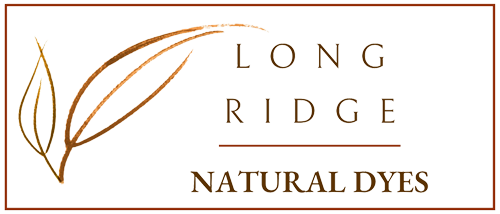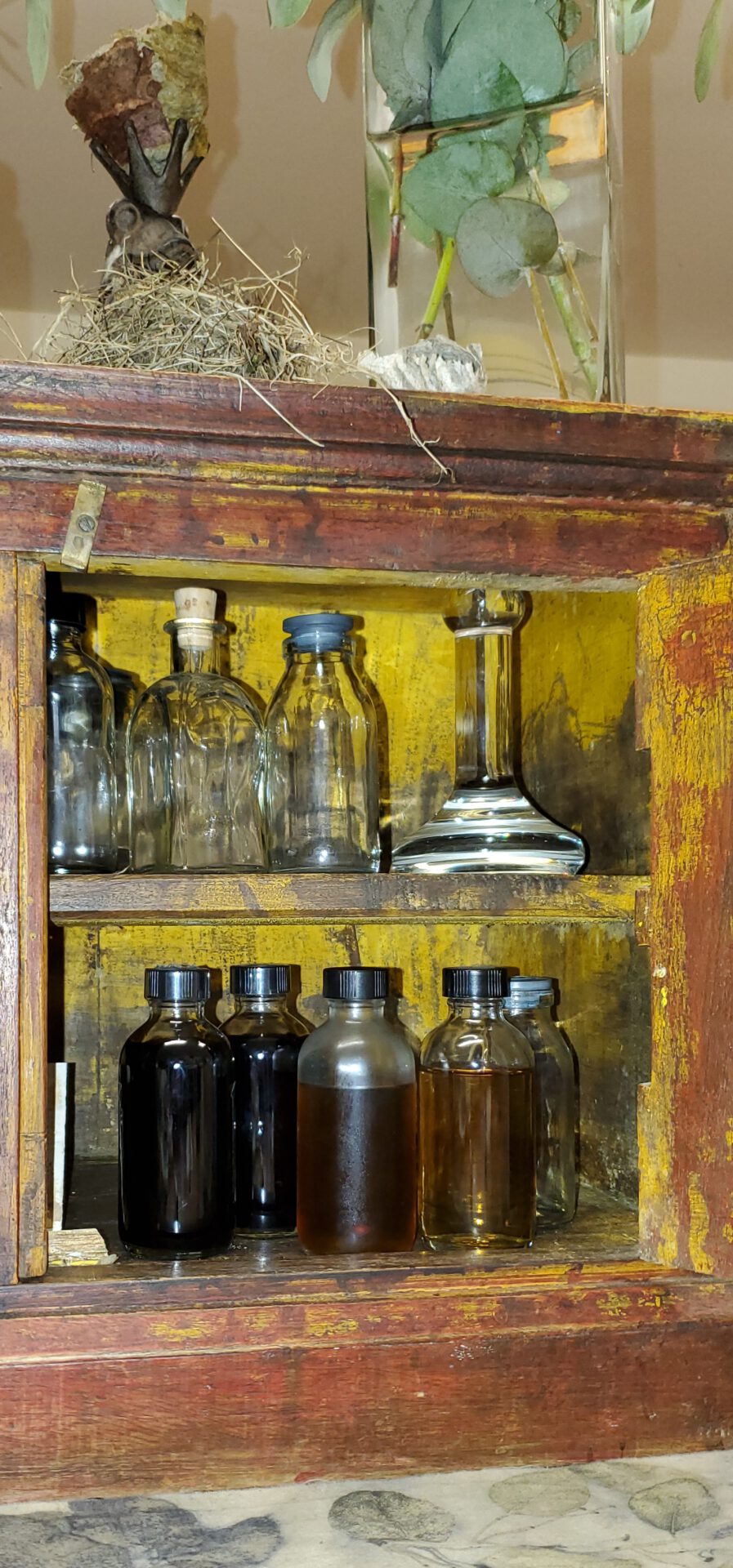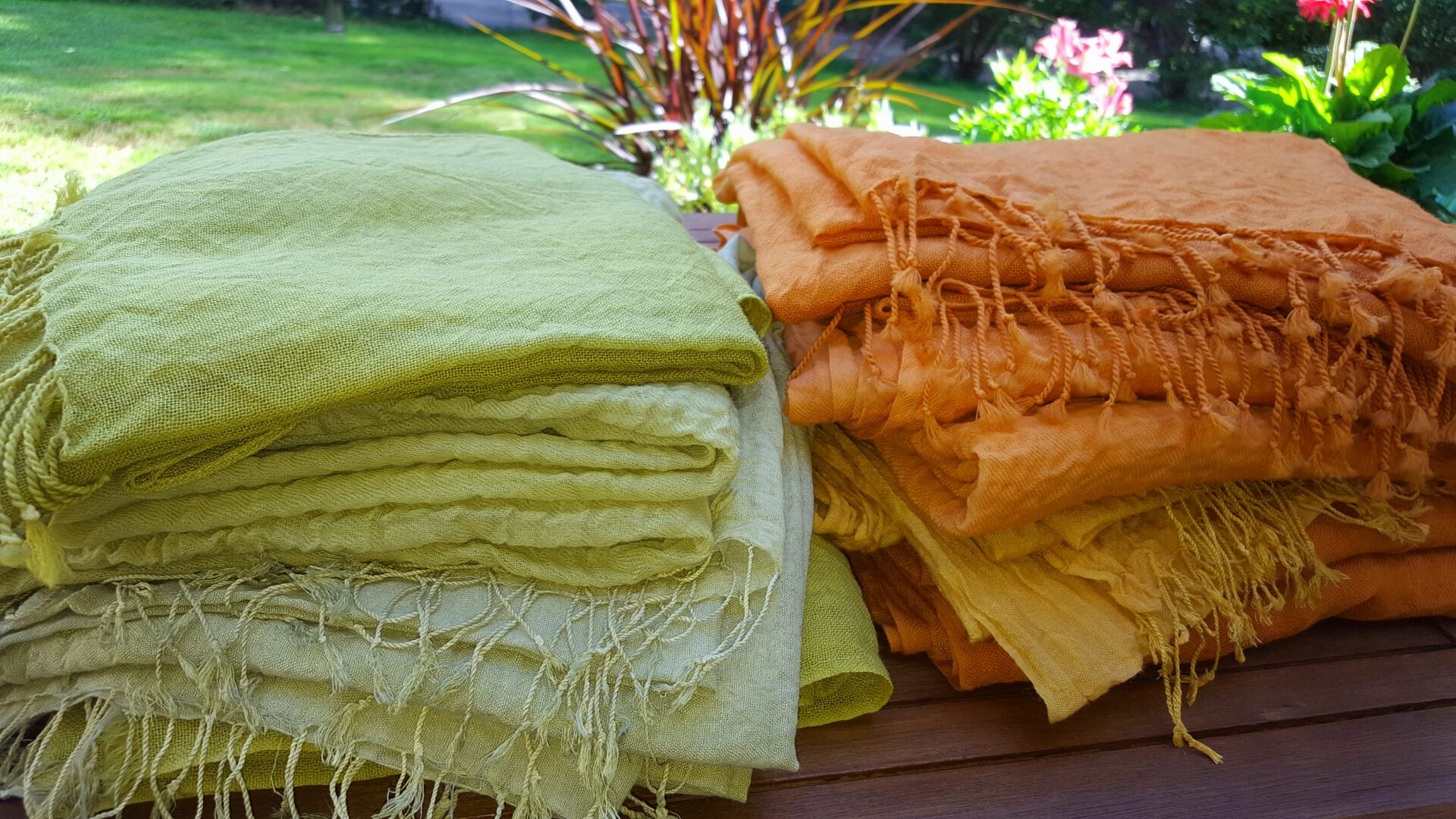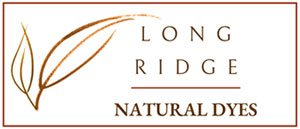Dye Tips
Natural dyeing is ever-changing with limitless variables. Your work should be an individual one, from the colors you choose to the medium you work with, coupled with a healthy dose of inspiration and the courage to test new ideas. There are many ways to get great color and these notes are intended to support you as you learn, not to hold you back from experimenting. Ultimately, the best colors from your dyepot are achieved through experimentation, understanding your variables (local water, soil, dyepots) and a strong desire for serendipity. Always leave trepidation and doubt outside the door. Natural dyes are too fluid for such thoughts.
Feel free to contact me if you have questions.
Before you begin dyeing get organized.
For just a few dollars you can gather all the items you need for your own dyeing enterprise. You do not want to use any pots, containers or utensils that are also used in your kitchen cooking. If you have a secondhand store in your area, visit there and look for pots; stainless steel, enamel, or other non-reactive materials. I like the canning pots as they are not too expensive and a good size. Just make sure there are no rust spots inside the pot as this will react with your dyeing causing color changes at the very least. Rust can be your friend (back to variables) if you want more unexpected results. Rust can be damaging to your substrate so always be mindful that.
Notes: Temperatures stated are based on the Fahrenheit scale, adjust accordingly for Celsius
WOG (weight of goods) or WOF (weight of fibers).
These are the items I would initially recommend you have on hand specifically for dyeing:
• dye pot, stainless or enamel are best as they are non-reactive
• thermometer that has a range or 50~200°F
• mid-weight rubber gloves that will protect your hands from hot water as well as dye stain
• measuring cups and spoons for dye measuring
• scale ~ a food scale will do, found at kitchen stores that give gram and ounce readings; essential when measuring out your dyestuffs
• burner ~ stovetop, a portable camp butane burner, electric hotplate
• a source of water nearby from a faucet or garden hose; save your back lugging buckets of water to and fro
• spoons, tongs, maybe a potholder, kitchen timer or watch for counting the dyeing time
As you move forward in your dyeing experience you will discover what other items you need to make your dyeing experience pleasurable as well as organized and safe.
Scouring
The first step when preparing your fibers/fabric for dyeing is to properly wash them to remove any residues such as dirt, oils, and lanolin. The cleaner the fiber, the better the color results will be. Understand your water quality – is it hard or soft? What is its pH? Does it contain iron or other minerals? Some of the dyes are sensitive to water hardness, which can either enhance or inhibit color development, and may affect the final color of your fiber.
There are many washing agents available. In my experience, for protein fibers, Orvus Paste, Unicorn Fibre products and Dawn dish detergent are suitable for washing. They are gentle and do not add anything back into your fibers. Be judicious with the soap you use ~ too much just makes rinsing endless. For cellulose fibers, I suggest liquid Scour and soda ash. See instructions for Cellulose preparation further along in these notes. All mordants and assists are available to purchase in our store.
With yarns, I suggest that you add figure eight “dye ties” in at least 3 places around each skein to keep them from tangling throughout the wash/mordant/dye process. Tie them loose enough so they do not cause a white spot when you get into the dye pot but tight enough to keep the skein secure, knot well.
Wet your goods completely in a bucket of water. Draw a pot of water large enough to cover the goods. I like to run the scour bath to 160°F but do consider your fiber and its felting characteristics. Never agitate the bath. Heat the water slowly and when it reaches 100° add the soap/Scour and mix gently. Then add your wetted goods and slowly/evenly bring the temperature up to the desired finish temperature [i.e. 160°]. Let the wash bath cool to handle and rinse with the same temperature as the wash water. Once thoroughly rinsed and squeezed to damp, you may proceed straight away to mordanting.
Mordanting
This is the next essential step when dyeing with natural dyestuffs because it is the fixative that attaches the dye to the fiber. I recommend non-toxic mordants such as potassium aluminum sulfate (for protein fibers), aluminum acetate (for cellulose fibers) and cream of tartar. Alum is refined from bauxite, the raw state of aluminum ore. During the refining process sulfuric acid and potassium are used to remove impurities. The resulting alum is granulated and white, in its purest form. Cream of tartar is an acid, the sediment from fermented wine grapes. Use it to soften wool, brighten shades and it will change the color of some dyes such as cochineal, from a fuchsia to true red. It is seldom used with plant fibers.
Mordants such as chrome, tin and copper are not recommended as they are not safe for the dyer and the environment. The colors you will achieve using alum and cream of tartar will be just as vibrant without the risks associated with the heavy metal mordants.
To mordant protein fibers such as wool and silk
First, make note of the dry weight of your cloth or fibers. This is known as WOG (weight of goods) or WOF (weight of fibers). Soak your fibers until completely wet, in warm water, rinse and squeeze out excess water. Measure out the aluminum sulfate at 12-15% to WOG to be dyed. (i.e. 10 ounces of fiber, Alum sulfate = 1.2 to 1.5 ounces).
Dissolve the alum sulfate in a little boiling water and add to dye pot. Have enough warm [110°] water in the pot to cover the goods. Add the clean, wet goods to the dye pot and slowly bring the bath up to 200° for wool / 180° for silk over 45 minutes, regularly rotating the goods while temperature rises. Hold at above temp for additional 45-60 min. Turn off heat, let fibers cool in the bath overnight, gently squeeze the excess water and quickly rinse. You may keep damp, mordanted goods for a month if kept in a plastic bag and refrigerated, which prevents molding, until you are ready to dye. It is also acceptable to allow fiber to dry after mordanting. Just be sure to completely wet fiber before proceeding to the dye pot.
To mordant cellulose fibers, such as cotton, flax, and linen
Immersion Method
Whether you do surface design or immersion dyeing, the following procedures are the most efficient for applying the mordant to plant fibers (other than leaf fibers). The resulting colors are dark, rich, and light fast. The mordanting process includes two steps: scour followed by the application of alum acetate. This method ensures maximum dye absorption, dramatically improving lightfastness and color depth on cotton and other cellulose fibers.
Aluminum acetate (alum acetate, alum) is refined from bauxite, as well. However, acetic acid is used as the purifying agent. The resultant white powder is quite fine, much like powdered sugar. The addition of a scouring step (first bath below) prepares the plant fibers thoroughly prior to the mordanting.
First bath: immersion with scour and soda ash
- Add enough water to the dye kettle to cover the goods well (100°F).
- Add liquid scour at 5.5% wof, dissolve in the above water.
- Add soda ash at 2% wof, dissolve in boiling water and added to the scour bath.
- Temperature range: Slowly bring the bath up to temperature over twenty minutes; hold at 180°F for 30 minutes; rotate goods regularly while the temperature is rising.
- After scouring, rinse the fiber quickly in warm water, gently extract and proceed to the second bath.
Second bath: immersion with alum (fresh water)
- Add enough water to the dye kettle to cover the goods well (100°F).
- Use alum acetate @ 5% wof dissolved in boiling water (always wear a mask when dissolving alum acetate powder). Add the alum acetate to the bath water; add the fiber to the mordant bath and gently stir.
- Temperature range: Start at 100°F and hold for one hour, rotate regularly.
- After mordanting, rinse the fiber quickly in warm water, gently extract and proceed to the next step. Keep the fiber damp in plastic bags until it is ready to dye.
Having your goods mordanted ahead of time allows for those moments of inspiration when you want to dive into your dye pot and pull out stunning colors!
Consider allowing your fiber/cloth to “rest” dampened after mordanting for at least a few hours, being mindful not to allow molding to occur. You will be much happier with the results…brighter colors, better lightfastness, no crocking [coming off in your fingers as you spin or knit]. After that resting period the goods may be dried. Just be sure to thoroughly wet before adding to the dye pot.



